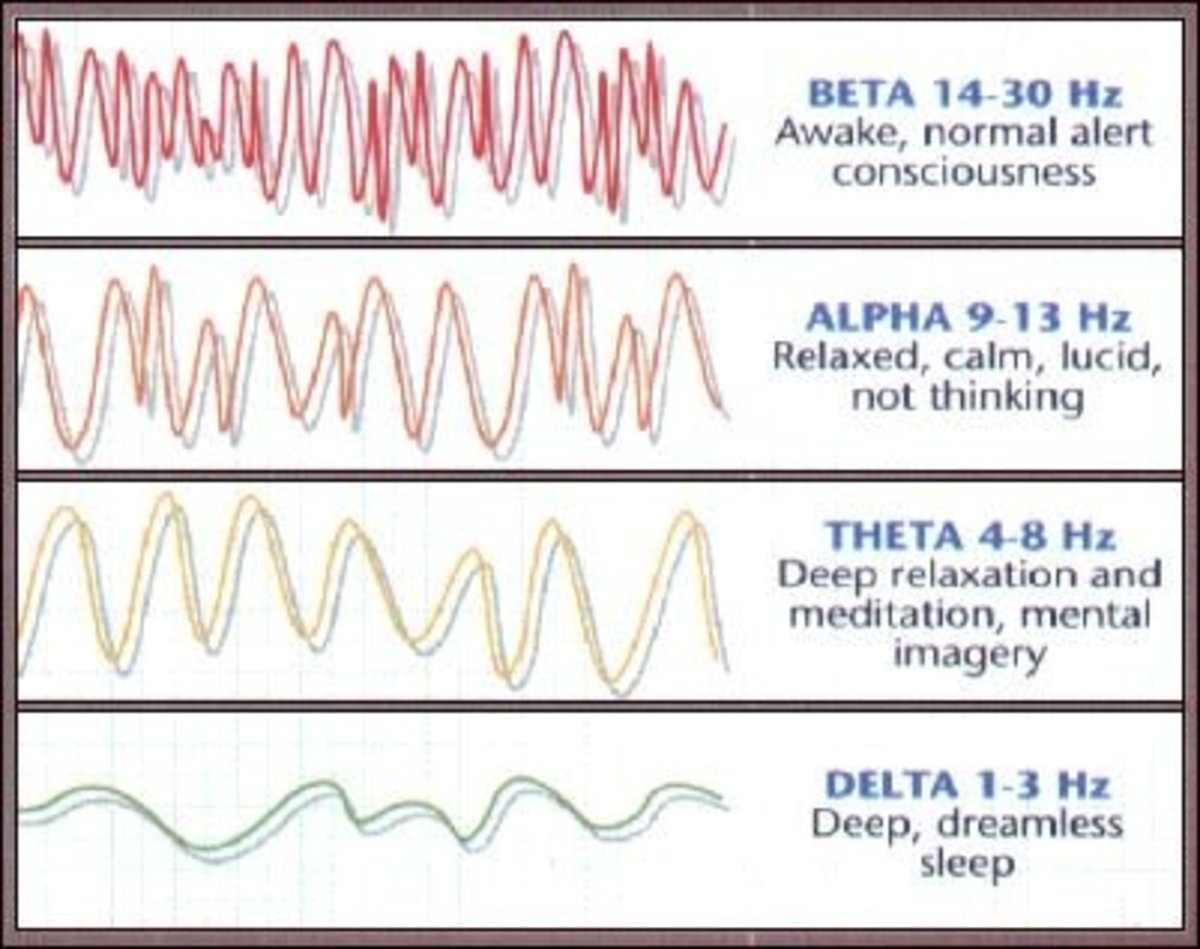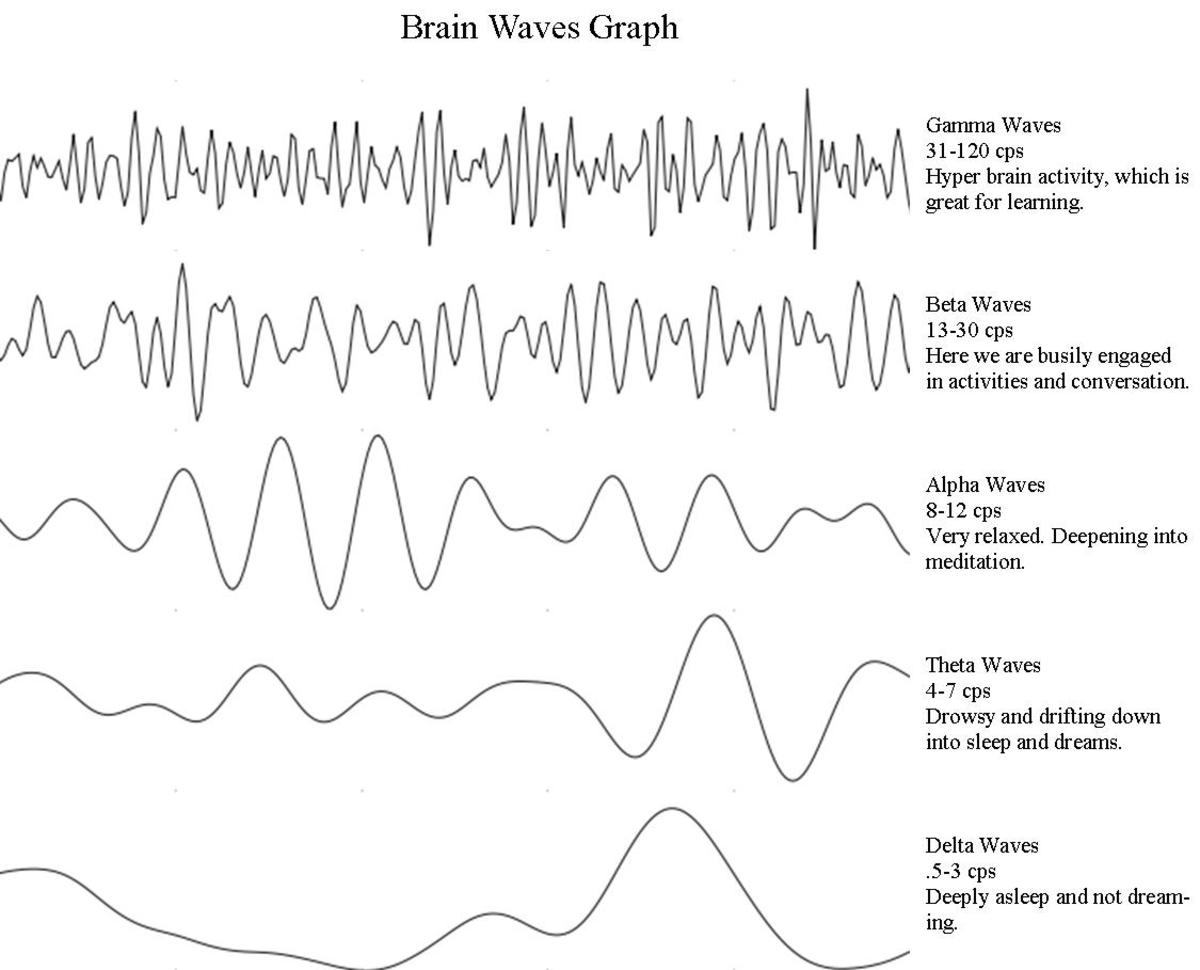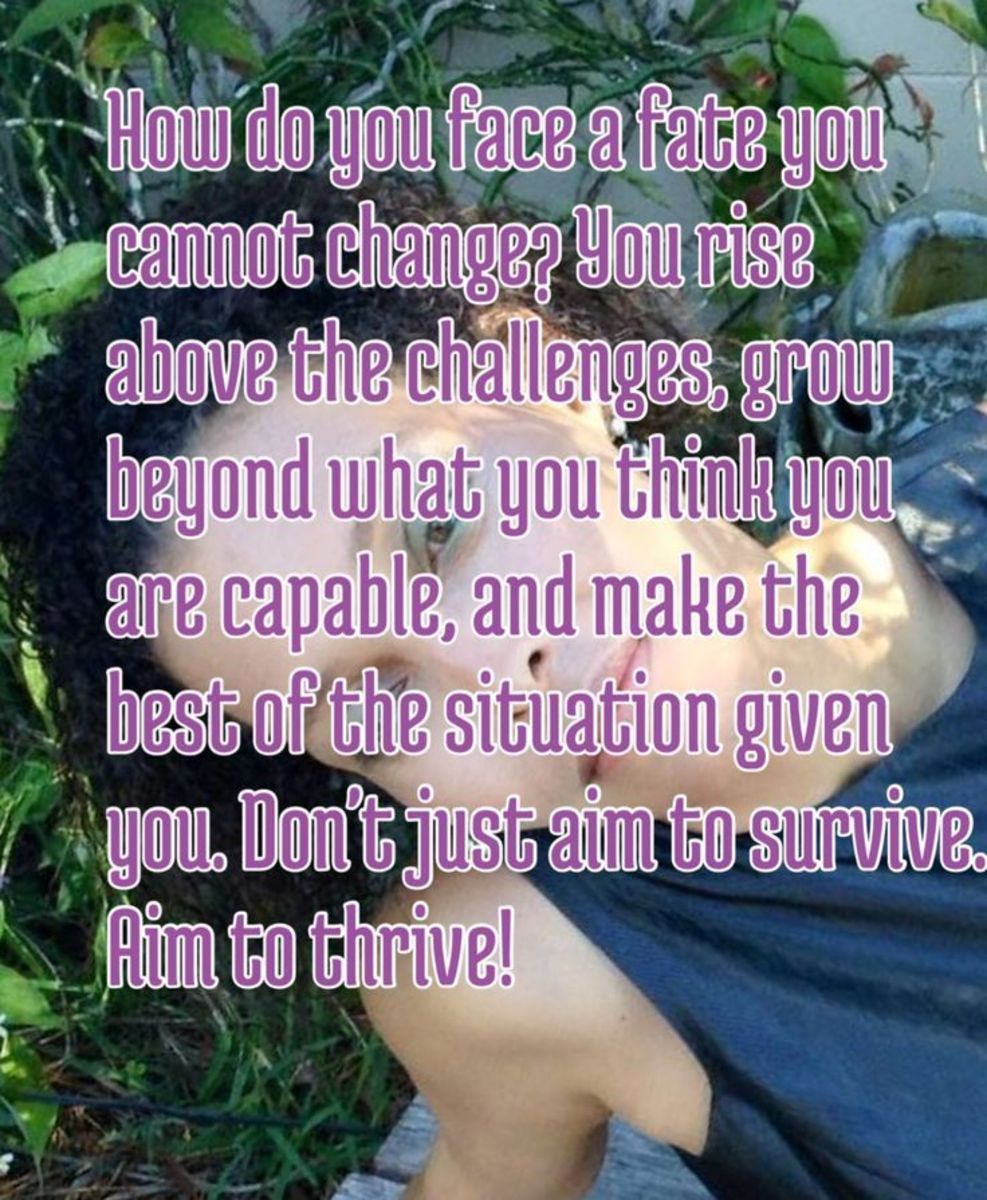An Illustrated Guide to Understanding and Influencing Your Brainwaves

Everything we do in life has a brainwave signature, whether it’s reading, driving, talking or sleeping. And while such experiences can never be reduced to mere brainwave activity, science has helped us to understand that brainwaves do play a substantial role in the quality of our lives. Even more exciting, is the idea that we can consciously—to some degree, at least—decide which brain state and state of mind we want to be in. If this idea holds any degree of truth—and there is a significant body of scientific evidence that suggests it is—then an understanding of brainwaves would probably help us to move closer in realizing this truth for ourselves in our individual lives.
With that goal in mind, let’s take a simple but intriguing journey into what brainwaves are, how they impact our lives, and how we can work with them to improve the quality of our lives.
What are brainwaves?
Brainwaves are fluctuations of electrical energy in the brain. In fact, you might think of them as complex electrical rhythms, so that any particular brainwave pattern merely reflects the complex rhythmic frequency with which groups of neurons in your brain are firing on and off. As electrical impulses travel from neuron to neuron, the rate of travel, of course, has a certain rhythm to it. And when you combine the rhythms of various neuronal groups, they create what might be described as an intricate, modulating, poly-rhythmic dance of electromagnetic energy.
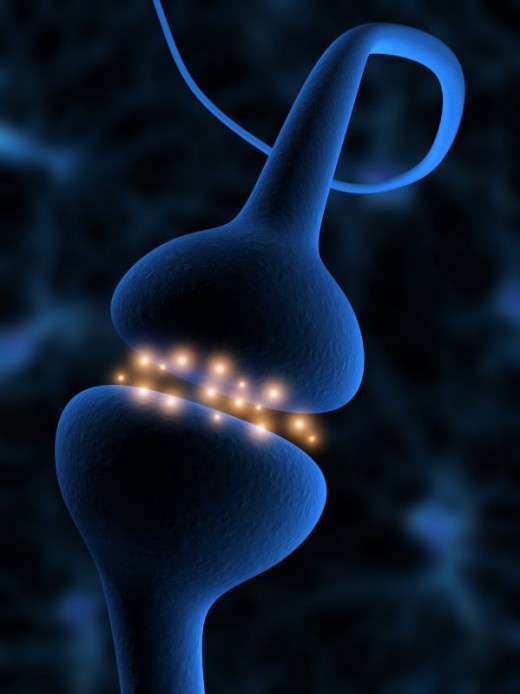
What are brainwave patterns?
Brainwave patterns are simply distinct groups of neuronal firing rhythms, ranging from the very fast to the very slow. And while a specific area of the brain may exhibit a more-or-less unified brainwave pattern for any period of time, such patterns tend to fluctuate, and the brain as a whole is constantly exhibiting a complex and ever-changing “soup” of rhythmic firing patterns. In understanding brainwaves, it is helpful to see the brain as a dynamically pulsing, rhythmic organism. If the brain is like a drummer, for example, then individual brainwave patterns are like the basic time signatures in which a drummer plays. If you can imagine many drummers playing at the same time, each playing to a different time signature, you will begin to sense the immense complexity of energy and information flowing through the brain at any given time. In the brain’s case, this fluctuating rhythmic activity refers not only to the on/off cadence of neuronal firing, but to the oscillating electromagnetic waves emanating from such activity as well.
For convenience, mainstream neuroscience distinguishes between five basic categories of brainwave patterns: gamma, beta, alpha, theta and delta.
Brainwave Pattern
| Cycles Per Second
| Correlated Processes and States of Consciousness
|
|---|---|---|
Gamma
| 40 Hz – 99 Hz
| - Higher levels of brain organization - Possesses a binding action noticeably absent in schizophrenic patients - Above average integration of sensory information - Enhanced self awareness and insight - Clarity of mind - Suppressed totally by anesthetic - Believed to deeply influence waking consciousness and perception - Found in all parts of the brain - Most prominent in highly developed practitioners of Tibetan Buddhist compassion meditation - Euphoria
|
Beta
| 13 Hz - 39 Hz
| - Sensorimotor awareness - Wide awake - Alert - Focused - Analyzes and assimilates new information rapidly - Complex mental processing - Peak physical and mental performance - Cannot be sustained indefinitely - Prolongation of beta can lead to exhaustion, anxiety, and tension - Short bursts of beta have been used for improving cognitive intelligence
|
Alpha
| 8 Hz - 12 Hz
| - Accelerated learning - Beginning of drowsiness - Relaxed alertness - Zen meditation - Open focus (termed coined by Dr. Les Fehmi) - Can stimulate the release serotonin (vital in the regulation of mood and sleep)
|
Theta
| 4 Hz - 7.5 Hz
| - Hypnogogic state - Dreaming sleep - Creativity inspiration - Vivid imagery - Deep meditation - Out-of-Body experiences - Long-term memory
|
Delta
| .5 Hz - 3.5 Hz
| - Deep dreamless sleep - Formless/expansive awareness - Very deep meditation - Healing and recuperation - Empathy
|
Through the use of modified electroencephalogram equipment, and in participation with highly trained meditators, Jeffrey Thompson, D.C., B.F.A. has categorized three additional brainwave patterns which are generally not recognized in mainstream neuroscience: lambda, hyper-gamma and epsilon.
Brainwave Pattern
| Cycles Per Second
| Correlated Processes and States of Consciousness
|
|---|---|---|
Lambda
| 200+ Hz
| - Theorized to be the pattern involved in certain Tibetan monks able to walk barely clothed for days through the snow - Difficult to measure - Believed to be carried on the very slow moving Epsilon Waves
|
Hyper-Gamma
| 100 Hz - 199 Hz
| - Very rare - Ecstatic states of consciousness - Exceptional integration of sensory information - Associated with overcoming barriers to personal development - Tremendous focus/self awareness - Deep feelings of love and joy
|
Epsilon (Sub-Delta)
| ¼ cycle per sec/1 frequency per 10 sec/1 frequency per minute - .4 Hz
| - Very rare - Ecstatic states of consciousness - Deep spiritual insight - High level of inspiration - Theorized to be the state Yogi's go into when there is no discernable heart beat, respiration or pulse
|
Methods for Positively Influencing Your Brainwaves
Biofeedback - By monitoring specific biorhythms, the measurements of which are then fed back to the participant, conscious control over various physiological functions (including brainwaves) can be developed.
Neurofeedback - Described as a subset of biofeedback, neurofeedback uses far more sophisticated equipment to track complex brain rhythms in real time, which, when instantly fed back as audio-visual information to the participant, allow the possibility of developing subtle but powerful methods for influencing brain function. Neurofeedback training has been used successfully to treat alcoholism and attention-deficit disorders as well as enhance sports performance. It is, however, quite expensive.

Meditation - Scientific evidence suggests that meditation exercises significant influence over brainwave patterns, though different forms of meditation tend to be correlated with distinct brainwave patterns. For example, Zen meditation has been largely correlated with alpha waves (though theta waves have been found in highly adept Zen meditators), gamma waves have been correlated with Tibetan Buddhist Lovingkindness meditation, and theta waves have been found to be predominant in Sahaja meditation.
Anna Wise's Techniques - In her book, The High-Performance Mind, Wise reveals three simple methods she has found to significantly influence brainwaves: 1) Rolling the eyes upward (with eyelids closed) two or three times at the beginning of meditation has been found to immediately produce alpha waves, though only for a short time (which makes this technique useful for quickly moving into alpha); 2) Completely relaxing the tongue, which allows for a significant reduction of noisy beta waves; and 3) The use of vivid visualization which incorporates successive passageways, descending stairways and movements into deeper territory, all of which facilitate the emergence of theta waves.
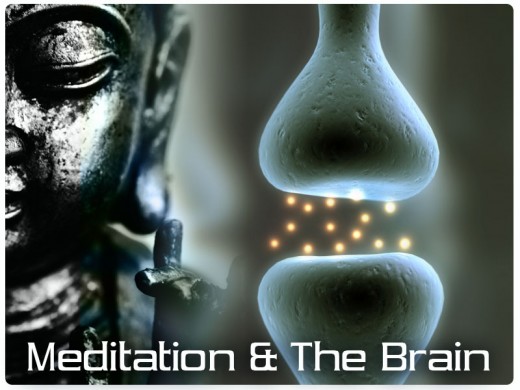
Lester Fehmi's Open Focus Technique - Nuerofeedback pioneer Les Fehmi has found that simply by imagining the space in and around your body, you can immediately produce alpha waves. You can find out more about this easy but effective technique through his book, The Open Focus Brain.
Clinical Hypnosis - Because of its impact on brainwaves and suggestibility, clinical hypnosis is being used more and more by medical professionals to significantly affect human behavior.
Brainwave Entrainment (BWE) - Because the brain is a rhythmic organism, brainwave entrainment utilizes rhythmic pulses of light and/or sound to rhythmically entrain brain rhythms to targeted patterns. To accomplish this, mind machines use both audio and visual pulses, while other programs use only audio pulses (for example, in the form of isochronic or monaural tones, or binaural beats). BWE has been used successfully to increase memory, GPA and overall intelligence, and, even better, it costs only a fraction of the cost of neurofeedback. It is also believed to improve cerebral blood flow.
Theanine - Found only in green tea, this amino acid has been found to induce alpha waves and significantly improve sleep. It is also available in capsule form, which can be found online or in most health food stores.
Slow, Deep Diaphragmatic Breathing - Place your hand on your stomach, and allow your breath to softly expand your belly, slowly and evenly. This can be practiced as a kind of simple meditation, but is best practiced throughout the day whenever you become aware of your breathing. By doing so, you're not only allowing more alpha waves to emerge, you're also using more of your lung capacity as well as feeding your brain and body with more life enhancing oxygen.
Mantra - Dr. Herbert Benson in his book, The Relaxation Response, reveals his research findings that virtually any word, when silently repeated in a slow, monotonous and metered manner, will induce a relaxation response, in which alpha waves increase.
- iAwake
A blog of consciousness studies, neuroscience, spirituality and the mind.

